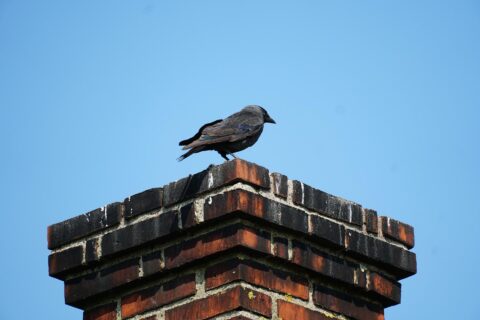Breaking Bad Habits that Lead to Creosote Build-up
Burning a fire creates an intense chemical reaction that produces by-products harmful to you and your family. This chemical reaction is seen in the black smoke billowing from your chimney.
But it’s the by-product that we don’t see is deep inside your chimney that can be the most harmful — potentially causing a chimney fire that can spread throughout your home.
This threat is creosote, a highly flammable material that adheres to the interior walls of your chimney and can catch fire in extreme heat. Creosote develops when the hot smoke from your fire cools in the chimney. This reaction causes the condensation of water, carbon, and volatile chemicals on the interior walls of your chimney, hardening as it cools after the fire.
Creosote can grow to be several inches thick, and attaches to your chimney in three stages:
- Stage One: This flaky and dusty creosote is loose and easy to remove with a chimney sweeps brush. This is often the newest-formed creosote.
- Stage Two: Stage two creosote resembles tar, and can requires a scraper or, at a minimum, a very stiff brush to be removed.
- Stage Three: This type of creosote is a very dense and sticky material causing a wax-like drip during hot fires. It’s this type of creosote that is most difficult to remove.
It’s important to have your chimney swept and inspected annually by a professional chimney cleaning service to ensure creosote build-up is kept to a minimum to reduce your risk of fire.
In addition, there are steps you can take to reduce creosote build-up — and reduce the cost of any chimney repair required due to excessive build up, including:
- Making sure you effectively burn off by-products by burning hot, raging fires in your fireplace. The fire will heat the chimney, reducing the risk of condensation and creosote build-up.
- Burning thoroughly dried wood. Wood drying for less than six months contains moisture that can contribute to creosote build-up in your chimney.
- Making sure your fire has enough air to quickly escort smoke and chemicals out of the chimney away from your home.
ChimneyTEK offers chimney sweep services designed to remove the threat of creosote build-up. We also perform chimney repair to keep you and your family safe. Contact us today to keep your chimney free from creosote.


